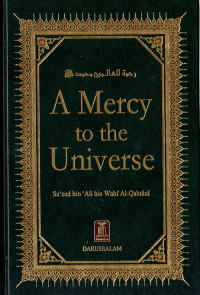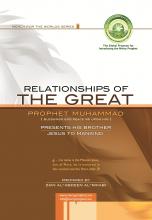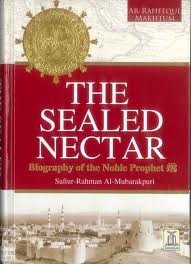The Prophet of Mercy Website
Muslim World League - Global Commission for Introducing the Messenger
The folks of Sheba were one of the oldest nations of the pure Arabs, who lived in Yemen.
Excavations at “Or” brought to light their existence twenty five centuries B.C. Their civilization
flourished, and their domain spread eleven centuries B.C.
It is possible to divide their ages according to the following estimation:
1. The centuries before 650 B.C., during which their kings were called “Makrib Sheba”. Their
capital was “Sarwah”, also known as “Khriba”, whose ruins lie in a spot, a day’s walk from
the western side of “Ma’rib”. During this period, they started building the “Dam of Ma’rib”
which had great importance in the history of Yemen. Sheba was also said to have had so
great a domain that they had colonies inside and outside Arabia.
2. From 650 B.C. until 115 B.C. During this era, they gave up the name “Makrib” and assumed
the designation of “Kings of Sheba”. They also made Ma’rib their capital instead of Sarwah.
The ruins of Ma’rib lie at a distance of sixty miles east of San‘a.
3. From 115 B.C. until 300 A.D. During this period, the tribe of Himyar conquered the kingdom
of Sheba and took Redan for capital instead of Ma’rib. Later on, Redan was called “Zifar”. Its
ruins still lie on Mudawwar Mountain near the town of “Yarim”. During this period, they
began to decline and fall. Their trade failed to a very great extent, firstly, because of the
Nabetean domain over the north of Hijaz; secondly, because of the Roman superiority over
the naval trade routes after the Roman conquest of Egypt, Syria and the north of Hijaz; and
thirdly, because of the inter-tribal warfare. Thanks to the three above-mentioned factors,
families of Qahtan were disunited and scatteredout.
4. From 300 A.D. until Islam dawned on Yemen. This period witnessed a lot of disorder and
turmoil. The great many and civil wars rendered the people of Yemen liable to foreign
subjection and hence loss of independence. During this era, the Romans conquered ‘Adn and
even helped the Abyssinians (Ethiopians) to occupy Yemen for the first time in 340 A.D.,
making use of the constant intra-tribal conflict of Hamdan and Himyar. The Abyssinian
(Ethiopian) occupation of Yemen lasted until 378 A.D., whereafter Yemen regained its
independence. Later on, cracks began to show in Ma’rib Dam which led to the Great Flood
(450 or 451 A.D.) mentioned in the Noble Qur’ân. This was a great event which caused the
fall of the entire Yemeni civilization and the dispersal of the nations living therein.
In 523, Dhu Nawas, a Jew, despatched a great campaign against the Christians of Najran in order to
force them to convert into Judaism. Having refused to do so, they were thrown alive into a big ditch
where a great fire had been set. The Qur’ân referred to this event:
“Cur
This aroused great wrath among the Christians, and especially the Roman emperors, who not only
instigated the Abyssinians (Ethiopians) against Arabs but also assembled a large fleet which helped
the Abyssinian (Ethiopian) army, of seventy thousand warriors, to effect a second conquest of
Yemen in 525 A.D., under the leadership of Eriat, who was granted rulership over Yemen, a position
he held until he was assassinated by one of his army leaders, Abraha, who, after reconciliation with
the king of Abyssinia, took rulership over Yemen and, later on, deployed his soldiers to demolish Al-
Ka‘bah, and , hence, he and his soldiers came to be known as the “Men of the Elephant”.
12
After the “Elephant” incident, the people of Yemen, under the leadership of Ma‘dikarib bin Saif Dhu
Yazin Al-Himyari, and through Persian assistance, revolted against the Abyssinian (Ethiopian)
invaders, restored independence and appointed Ma‘dikarib as their king. However, Ma‘dikarib was
assassinated by an Abyssinian (Ethiopian) he used to have him around for service and protection.
The family of Dhu Yazin was thus deprived of royalty forever. Kisra, the Persian king, appointed a
Persian ruler over San‘a and thus made Yeme n a Persian colony. Persian rulers maintained rulership
of Yemen until Badhan, the last of them, embraced Islam in 638 A.D., thus terminating the Persian
domain over Yemen.
The Sealed Nectar
******







